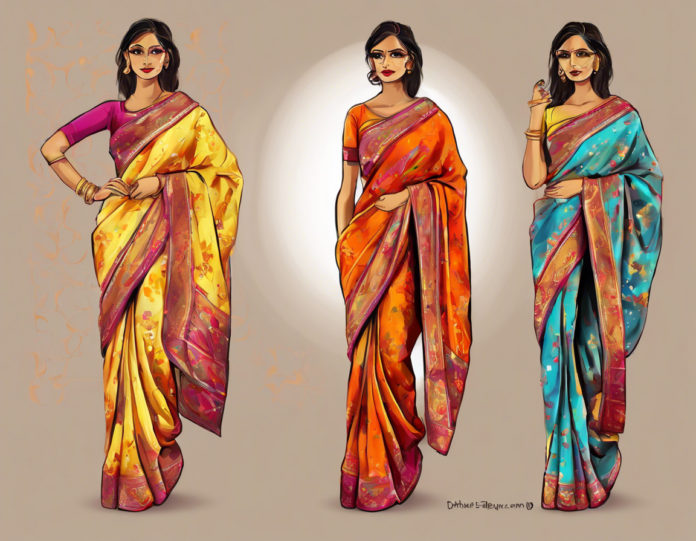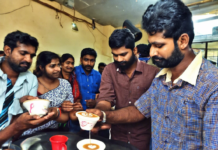India boasts a rich cultural heritage, and one of the most exquisite embodiments of this heritage is the Paithani saree. Originally hailing from the town of Paithan in Maharashtra, these sarees are a timeless symbol of tradition, elegance, and craftsmanship. The intricate designs, vibrant colors, and luxurious feel of Paithani sarees have made them a favorite choice for special occasions, weddings, and cultural events.
History and Origins
The history of Paithani sarees dates back to more than two thousand years. It is said that the art of weaving Paithani sarees was brought to India by the Salvi community from South India. Paithani sarees were originally woven using real gold and silver threads, making them a symbol of royalty and luxury. Over the years, the technique of weaving Paithani sarees has evolved, but the essence of the craft has remained unchanged.
Characteristics of Paithani Sarees
Paithani sarees are known for their intricate designs, which often include motifs inspired by nature, such as flowers, peacocks, and trees. These motifs are usually woven using zari (metallic thread) and silk, giving the saree a rich and opulent look. The borders of Paithani sarees are typically adorned with peacock or parrot motifs, adding to their charm.
One of the most distinctive features of Paithani sarees is the pallu, which is intricately woven and often features a color-contrast technique. This technique involves using a different color on the pallu to create a striking contrast with the rest of the saree. The pallu of a Paithani saree is usually its most elaborate and eye-catching part, showcasing the weaver’s skill and artistry.
Types of Paithani Sarees
There are two main types of Paithani sarees based on the technique of weaving:
-
Traditional Paithani: Traditional Paithani sarees are handwoven on a handloom by skilled artisans. These sarees are known for their intricate designs, fine quality silk, and rich zari work. Traditional Paithani sarees are usually more expensive due to the labor-intensive weaving process.
-
Narayan Peth Paithani: Narayan Peth Paithani sarees are woven on a Jacquard loom, which allows for more intricate and complex designs. These sarees are a modern take on the traditional Paithani and are often more affordable than handwoven Paithani sarees.
How to Identify Authentic Paithani Sarees
With the growing demand for Paithani sarees, it is essential to know how to distinguish between authentic and imitation Paithani sarees. Here are a few tips to help you identify an authentic Paithani saree:
- Look for the GI tag (Geographical Indication) that certifies the authenticity of Paithani sarees.
- Check the quality of silk and zari used in the saree. Authentic Paithani sarees are made of pure silk and real zari.
- Examine the weaving technique and intricacy of the design. Handwoven Paithani sarees are known for their fine craftsmanship.
Caring for Paithani Sarees
To ensure that your Paithani saree retains its beauty and luster for years to come, proper care is essential. Here are some tips for caring for Paithani sarees:
- Dry clean your Paithani saree to avoid any damage to the delicate silk and zari.
- Store the saree in a cotton cloth to allow it to breathe and prevent moisture build-up.
- Avoid exposing the saree to direct sunlight for extended periods to prevent color fading.
Paithani Saree: A Timeless Tradition
In a world where fast fashion trends come and go, the Paithani saree stands as a symbol of timeless beauty and tradition. From the intricate weaving techniques to the vibrant colors and motifs, every Paithani saree tells a story of Indian craftsmanship and culture. Whether worn for a special occasion or handed down through generations as a family heirloom, the Paithani saree continues to captivate and inspire with its unparalleled grace and elegance.
Frequently Asked Questions (FAQs)
-
Are Paithani sarees only suitable for special occasions?
Paithani sarees are versatile and can be worn for both special occasions and casual events. They are perfect for weddings, festivals, and cultural celebrations. -
What is the average cost of a Paithani saree?
The cost of a Paithani saree can vary based on the quality of silk, zari work, and intricacy of the design. Handwoven Paithani sarees are typically more expensive than Narayan Peth Paithani sarees. -
Can Paithani sarees be worn in different draping styles?
Yes, Paithani sarees can be draped in various styles like the Nauvari style, Bengali style, or traditional Maharashtrian style, allowing for versatility in wearing them. -
Do Paithani sarees require special care compared to other sarees?
Yes, Paithani sarees require gentle handling and should be dry cleaned to maintain their quality. It is essential to store them properly to prevent any damage to the delicate silk and zari work. -
Are there different color variations available in Paithani sarees?
Yes, Paithani sarees come in a wide range of colors, from vibrant hues like red, green, and blue to more subtle pastel shades. Each color combination adds to the beauty and charm of the saree.















